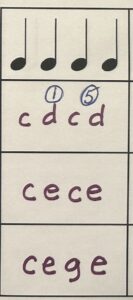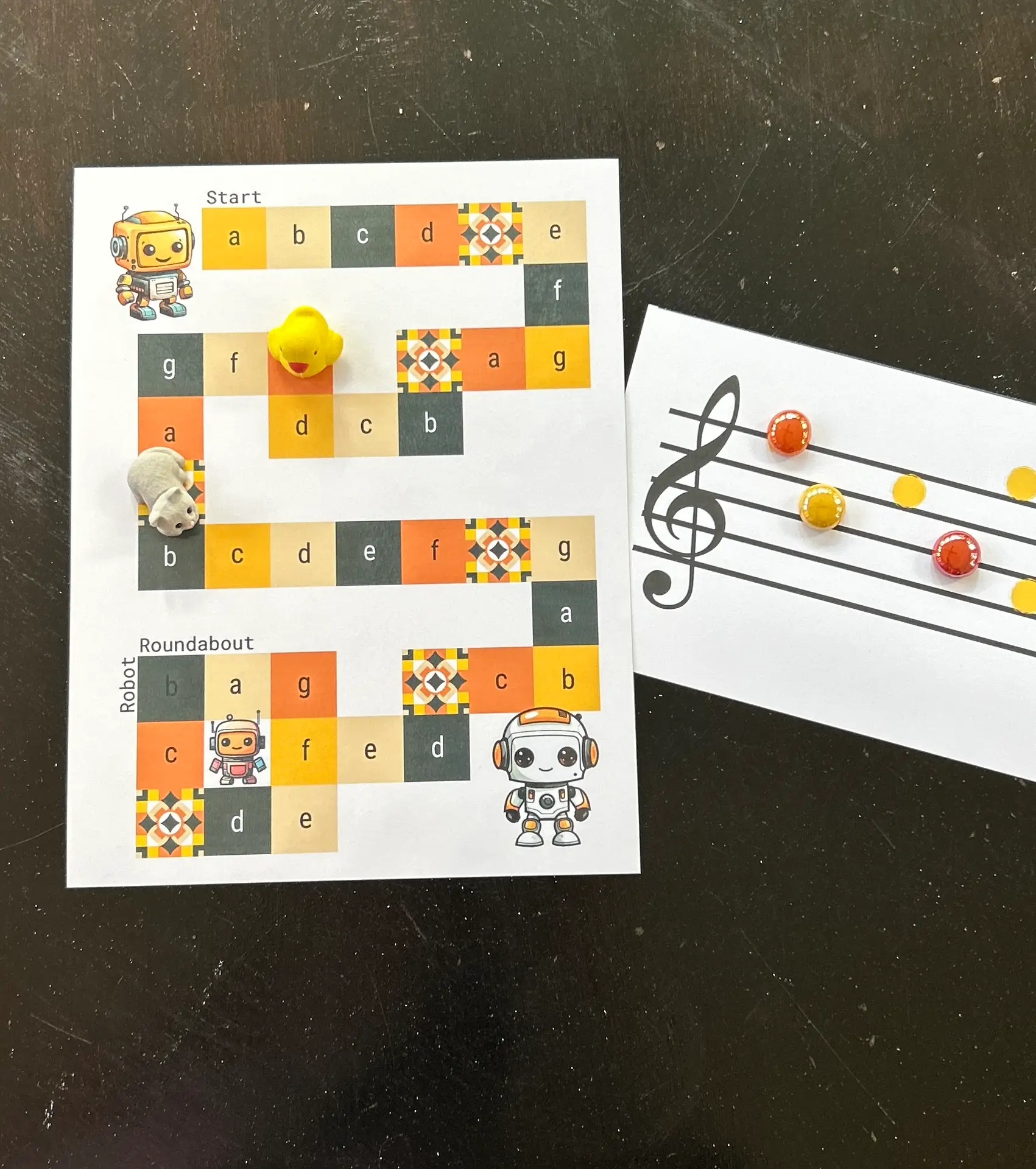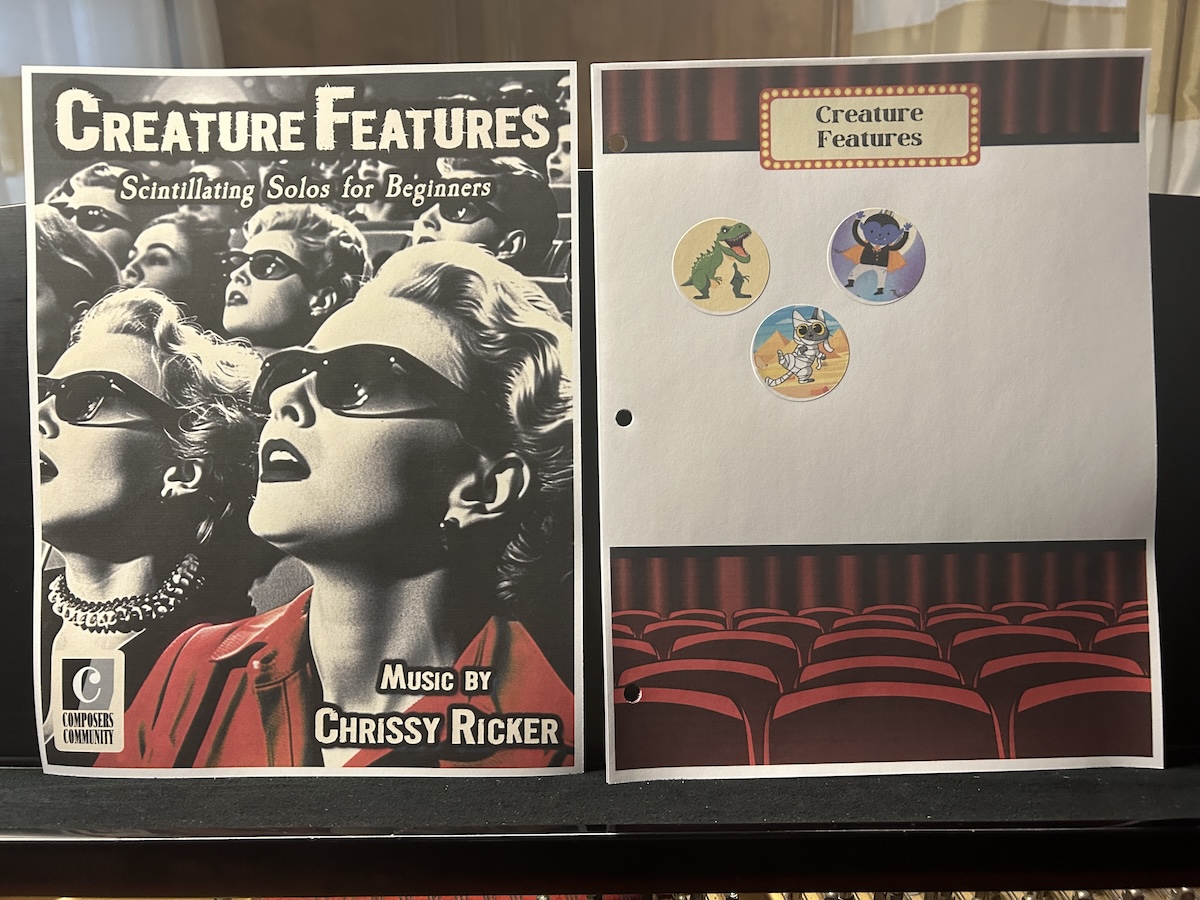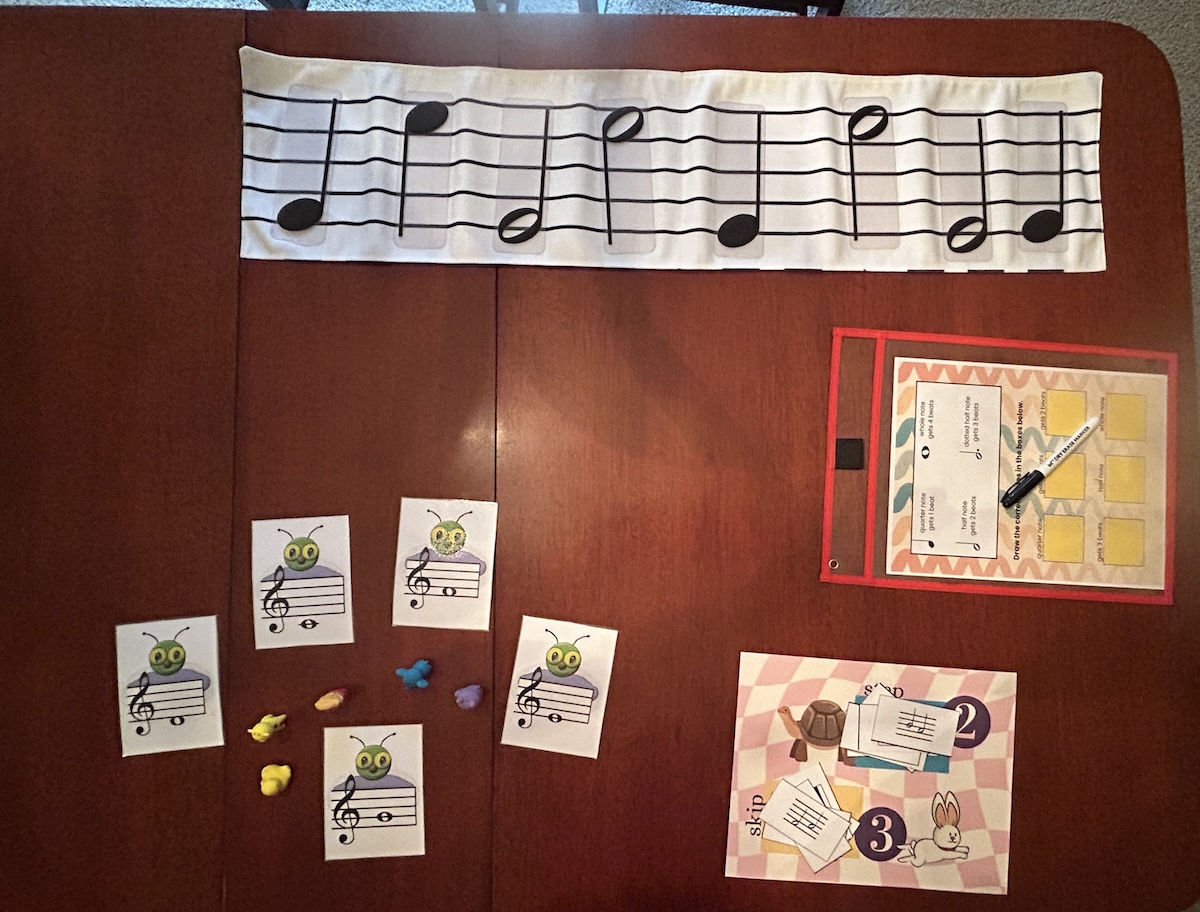I have struggled over the years getting students to come up with the most simplistic composition. Making choices between rhythms, notes, and chords can be a daunting task. Last week when I was working with a student, I drew this simple grid on a whiteboard. The basic step is to start with one rhythm and make a few choices. It is way less taxing to the brain than thinking of an entire composition.

When making these choices, you can guide them slightly, but if they start from a 5-finger pattern, even random selections will produce great results. To make this even simpler, especially in a more complicated scale position, finger numbers could be used. The choice is up to you.
Continue with each column until they are all filled. You may want to have them end one of the final selections on the tonic if they are using it as the final measure.
Once the grid is completed, just try them out and number them in order. Once they have determined the order and how many measures they would like, the next step is to take it to paper.
I have included download links for this resource below. It includes 3 simple grids in both 4/4 and 3/4 time. I would love to hear from you if this was helpful in your studio.




